Which Japanese conveyor belt sushi chain has the best yellowtail sushi?【Taste test】
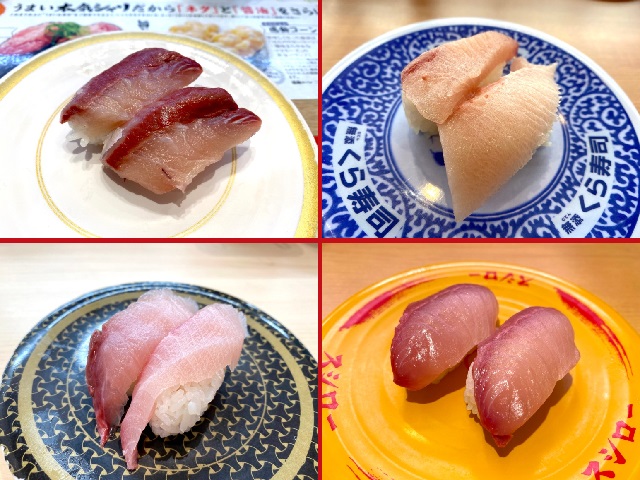
Hamachi and buri are on our mind and on our plate.
Recently, our Japanese-language reporter P.K. Sanjun has taken on the arduous assignment of finding out which of Japan’s conveyor belt sushi restaurants have the tastiest food. We keep trying to tell him we’d be glad to share the workload, but each time he softly smiles, lays a gentle hand on our shoulder, and says “It’s OK, guys. This is my burden to bear.” Then he selflessly strides out, alone, to get paid by our boss for eating a lot of seafood.
Today, his quest once again takes him to the big four conveyor belt sushi chains, Kappa Sushi, Kura Sushi, Sushiro, and Hama Sushi, and this time it’s yellowtail that’s on his mind/plate.
▼ A yellowtail in pre-sushi form
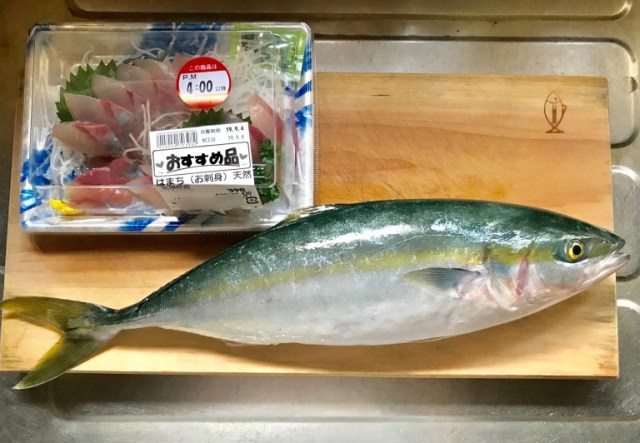
Before getting to the main course of today’s topic, though, let’s nibble on a linguistic appetizer. In Japan, certain types of fish have different names depending on their size, and so the fish called hamachi and buri in Japanese are both yellowtail. To clarify, hamachi and buri are the exact same species, it’s just that smaller/younger yellowtail are called hamachi, and larger/more mature ones buri.
We bring this up because in order to eliminate seasonal discrepancies, P.K. hit up all four restaurants on the same day, with just three hours passing between his first plate of yellowtail and his fourth. Due to ingredient availability on that day, P.K. taste-tested buri at three places and hamachi at one, but again, they’re technically the same fish. Also, each restaurant’s yellowtail is identically priced at 110 yen (US$0.95) for two pieces, so this is a head-on battle of price-point equals.
▼ Clockwise from top left: Kappa Sushi, Kura Sushi, Sushiro, and Hama Sushi
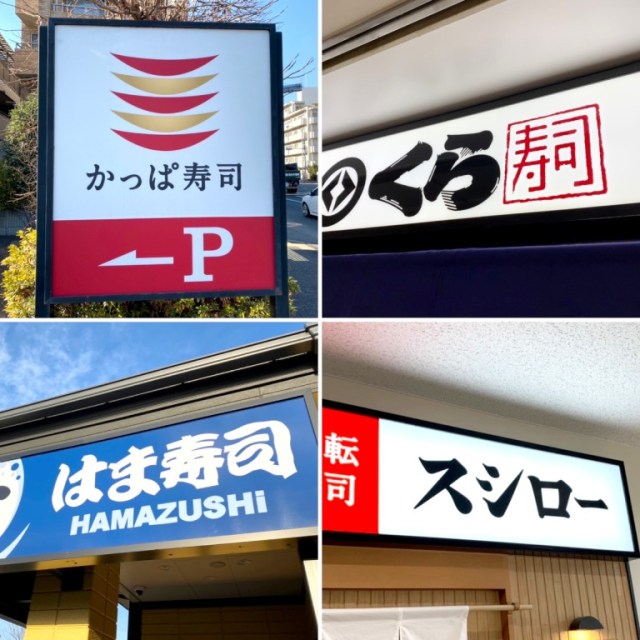
And with that, let’s take a look at P.K.’s notes, in the order in which he visited the restaurants.
● Kappa Sushi buri
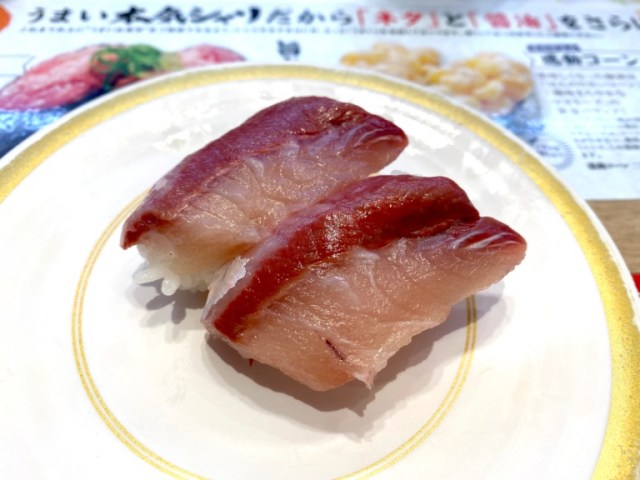
“This wasn’t bad, but I felt like the sushi could have been a little colder. The taste is average for yellowtail, but I would have liked a little more fat. Overall, I wouldn’t go out of my way to recommend this, but I also wouldn’t discourage people from ordering it either.”
● Kura Sushi hamachi
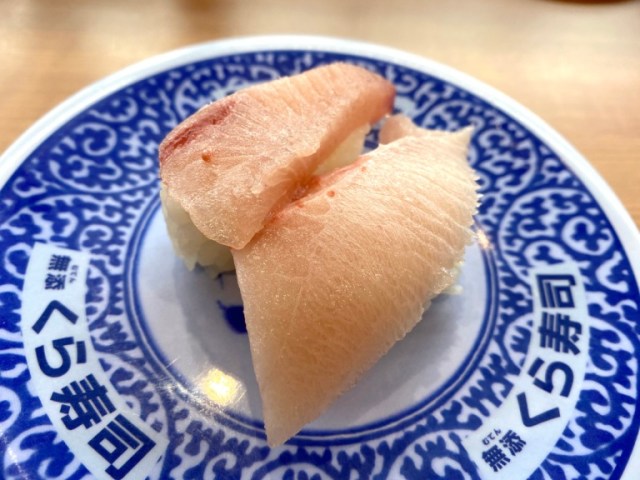
“This one has a good amount of fat, making it flavorful and moist, and it’s a really good value in terms of quality for just 110 yen. If you’re eating at Kura Sushi, you’ll want to make sure to eat at least one plate of this.”
● Hama Sushi buri
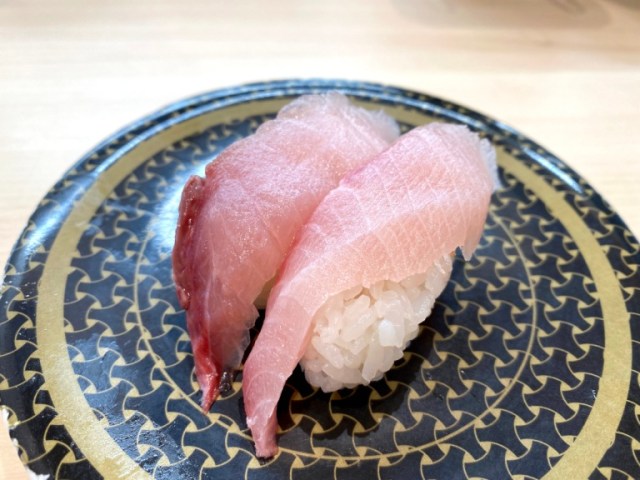
“Hama Sushi gives you really big cuts of fish. Aside from that, though, nothing really stands out. It’s sort of like Kappa Sushi’s buri – I wouldn’t say you’ve got to eat it, and I wouldn’t say you should pass on it. It’s sushi that won’t let you down, but won’t surprise you either.
● Sushiro buri
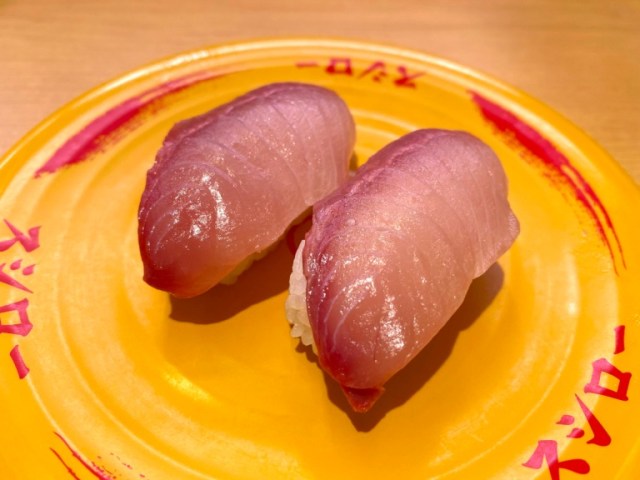
“I can’t find anything bad to say about Sushiro’s buri. It won’t blow you away, but the size, fat content, and flavor are all good, and if someone is complaining about it not being even better at this price point, they’re the one with problems. Honestly, this is excellent.”
So out of the four, P.K.’s picks for yellowtail are Kura Sushi and Sushiro. You’ll notice, though, that he’s OK with Kappa Sushi and Hama Sushi’s too. As he digested and ruminated on this round of comparative conveyor belt sushi tasting, he came to the conclusion that “Yellowtail is a type of conveyor belt sushi with solid defense.” Since yellowtail is one of the most popular kinds of sushi, restaurants know customers are going to be ordering it, so the major chains do a good job making sure their quality is high enough to prevent complaints and criticisms.
In conclusion, it’s not a matter of whose yellowtail is bad and whose is good, but whose is good and whose is better, so the best move when choosing where to eat might be to also take into account which chain’s tuna, salmon, and salmon roe suit your tastes.
Photos ©SoraNews24
● Want to hear about SoraNews24’s latest articles as soon as they’re published? Follow us on Facebook and Twitter!
Credit:

0 comments: